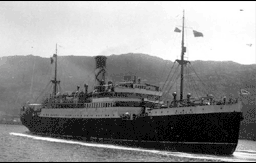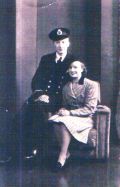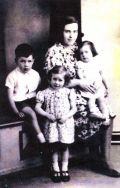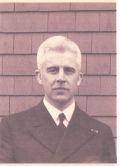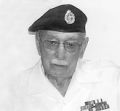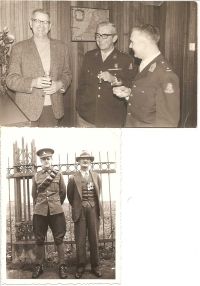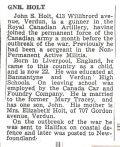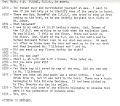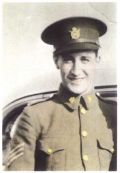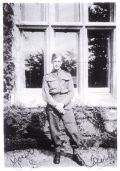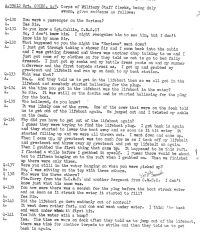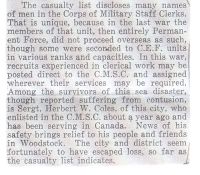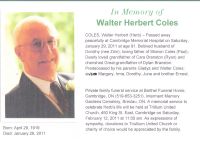Harold Reginald Mansell Davies
British Merchant Navy – 3rd Radio Officer
Harold’s story is one of the saddest to come out of the Nerissa sinking. The SS Nerissa was his first ship as a radio officer and the start of his career in the British Merchant Navy.
Harold was born in 1912 in Port Talbot, Wales, the son of William Davies and Rachel Ann Thomas. He had three brothers, Percy Josiah, Ernest Strother and Aldridge Arthur. Their father was a train driver, earning 38 shillings a week and working 12 hours a day with no weekends.
William died in the flu epidemic of 1919 at age 46 leaving his wife Rachel to bring up the four boys, ages 11, 10, 8 and 5.
Harold went to Dan-y-Graig School and then Port Talbot Central. When he left school there were no jobs so he worked on a farm at Knutsford, Cheshire. He eventually trained as a radio operator and joined the Merchant Navy. Harold and his wife Vera Davidson had no children.
Letter from Harold written to his brother Aldridge from the SS Nerissa.
The following letter from Harold was sent to his brother Aldridge just days before the Nerissa sailed for Canada. The Nerissa was Harold’s first ship as a radio operator. Aldridge and Kathleen’s marriage took place on June 7, 1941 just a few weeks after Harold’s death and was of course a very sombre affair.
H.R. Davies
Wireless Officer
c/o Furness Withy & Co.
Royal Lines Bldgs.
Liverpool
Dear Aldridge,
Here I am on board ship at last, quite a good one too. I have been very fortunate in getting on her for my first trip. The only boring part about it is the fact that I have to stay on board while we are in port, which may be for another week or more, and as the wireless room is sealed up I have nothing to do except walk the deck. Still I expect I will become quite used to it in a day or so. I managed to run home for a few hours on Saturday night and came back Sunday afternoon, at my own risk of course, but it was worth it. Vera is coming to see me on Wednesday, her half day, so if I can run home again next weekend it will soon be time for us to sail and I will have filled the time up.
The food we get is very good indeed, and the officers that are left on board are quite friendly. The first and second wireless officers are quite good fellows from what I have seen of them. They have gone home on leave and it will be my job to advise them when we sail. I am not able to tell you where we will be going to but I expect I shall find out when we sail.
Vera is staying with Mother until things settle down a little and she sees how she will go on, or if Mother goes away for Easter. In the meantime she is keeping her eyes open to see if any houses should become empty in the Bentcliffe area. Regarding finances, the only allotment the Marconi Co. allow me to make is £5.00 per month which is reduced to £4.10.0 by allotment of subscription to the Radio Officers’ Union. The first £4.10.0 in my case will be made payable at the end of April so until that time things will have to go very slowly at home. I intend still paying my 10 shillings a week but of course you will understand that the next month will be the hardest time for them to pay their way at home. After that time, if everything goes alright the financial side will sort itself out. But as the allotment is so small in comparison I think the foregoing is the best I can do. I intend writing to Strother before I sail asking him to make a definite allowance per month as we all shall then be doing.
Kathleen is highly excited over your forthcoming event. I only hope that I may be able to be home when the time comes around. If I am not you will know that I wish you both all the happiness in the world. I can only hope that the “bloomin” war will soon finish and enable us to settle down around our own firesides and start living life reasonably and properly. What do you say? Anyway you know I wish you all that is good and best.
I hear that you have been having a run around Scotland last week. If the weather was as good as we had it here it must have been very nice for you to travel around in. I hope you are not moved before you receive this letter of mine or it may be some time before it catches up with you. I know you will be expecting a word or two from me.
I don’t think I have any further news to give you now so will close. Hoping to see you soon, safe and sound, and if I do not see you before the wedding I trust that everything will go off without a hitch.
If you receive this letter in good time drop me a line to the address on this letter and it will be brought down to me. So cheerio and God bless you.
Your loving brother,
Harold
Family Contact:
Malcolm C. Davies – nephew
